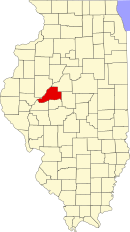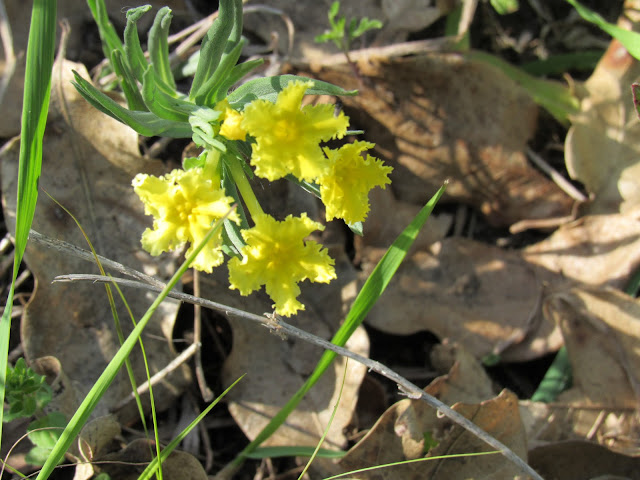First off, a bit of a bummer, I'm not going to the Smokies. That trip was unfortunately cancelled, something out of my control, and for reasons which I perfectly understand and agree with. Still, I saw so much over my trip to Mason and Tazewell counties that I feel, at least for the blog, this gives me more time to unpack what I saw. Life goats #3 and #4 are complete, and several goats that were in process of being made are also complete.

Mason County and the southern portions of Tazewell County (to the northeast), are dominated by the Wisconsin glacial outwash plain. As a result, the area has light tan sandy soils atypical of the black loam/clay soils found throughout the rest of the state. Thus, until the invention of modern irrigation methods, most of Mason County was difficult to farm. Therefore, Mason County's sand areas have survived better in their natural state than most of the rest of Illinois. Coupled with the large number of waterfowl and wetland preserves on the Illinois River nearby, Mason County is easily the wildest part of central Illinois. Just driving along, I spotted the soon-to-be ubiquitous Hoary Puccoon (Lithospermum canesces) on a roadside. Thanks to the specialized agricultural watering systems in use, the corners of fields are left unkempt, allowing prairie plants to thrive.
I began my expedition in Tazewell County, at Manito Prairie Nature Preserve. This preserve hosts at least two different rare Illinois native plants, Tennessee Milk Vetch (state-endangered) and Kittentails (State-threatened).
Someplace in Tazewell County also grows the extremely rare Lakeside Daisy (Tetraneuris herbacea), and I had gotten it into my head that this was the place, for some reason. At present, this does not appear to have any Lakeside Daisies, but then again I didn't find Kittentails, either. I did find a residential neighborhood immediately adjacent to the preserve, which I felt was a bit odd. Here's this small patch of wilderness in the middle of rural farmfields, and there's a neighborhood next door. I'm glad this preserve is saved, at least.
The first unusal plant was Fringed Puccoon (Lithospermum incisum), which differs from Hoary Puccoon by having... fringed flowers. This is a far more common plant further west, on the plains.
Another plant, one which I spotted frequently in the sand areas, was Pale Beardtongue (Penstemon pallidus), a species very frequent in Mason County and hard to find in areas of more typical soils.
Another extremely common species was Eastern Meadowlark (Sturnella magna). This was the most prevalent species of bird noted while driving. With nearly-exact precision there was one meadowlark every three telephone poles as I drove by.
There were so many unfamiliar prairie flowers, most merely leaves. Some, like the unknown species in front of the Eastern Prickly Pear (Opuntia humifusa), had already flowered. Others, like the cactus itself, had yet to flower. It should be noted that Eastern Prickly Pear, Hoary Puccoon, and Pale Beardstongue (as well as probably a few others species) become far more common once you reach the sandy soils of Mason County. While not rare in other places in Illinois, here these three become dominant species. Thankfully, Eastern Prickly Pear isn't a particularly sharp cactus.
One of the most prevalent species in the driest areas of Manito Prairie was Small-flowered Skullcap (Scutellaria parvula), a short, blue-flowered species that only grows where the dryness of the soil keeps other plants from competing with it. On the right are leaves of Pale Purple Coneflower (Echinacia pallida), a species that is going to bloom in a month or so.
Here, one can see in detail the flowers of Small-flowered Skullcap. They really are quite minute!
However, the real draw of this prairie is the rare species, such as Tennessee Milk Vetch (Astragalus tennesseensis). Furthermore, this is really the only rare plant I did manage to find. I found one specimen higher up on the edge of a ravine, partially shaded by grasses. The compound leaves below the flower belong to this plant. (If you don't know what compound leaves are, look just below the bottom flowers of the plant.) Tennessee Milk Vetch is only found in four states, (Illinois, Indiana, Tennessee, and Alabama) and Illinois has a very limited population of this species, making it State-Endangered. What amazes me is that I'm able to find this plant and yet never ladyslipper orchids.
As I walked away from the Tennessee Milk Vetch, I came across these unusual, unknown leaves.
As I came out of the treeline, I nearly stepped on a much large population of Tennessee Milk Vetch.
Above you can see the flowers far better. Forty feet away lay a residential backyard, where a man was occasionally glancing over at this strange man taking pictures in the meadow. This was not how I expected to see such a rare species.
Tennessee Milk Vetch only grows in slightly shaded sections of glades, like the area I found it. You can see the type of soil underlining Manito Prairie on the right side of the photo. This area's drier soil is a draw for species or genera that are typically found further west. The vast majority of Astragalus, for instance, live further west, especially in Utah. Penstemon, Lithospermum, Opuntia, these are all genera of plants that grow further west and have only a few species in Illinois. These plant genera are far more typical of places like Nebraska or Kansas or even Utah than Illinois.
Manito Prairie is located on the side of a ridge overlooking the Illinois River valley, and the scenery was quite stunning, especially with the flowers this time of year. I returned to my car and proceeded down the road to Powerton Lake, where Butterweed (Packera glabella) lit up a wet forest behind the levee of the lake. The picture ended up a bit trippy.
I'm stopping here for now, because there was so much to cover in just that one place alone. There will be extra posts this week, for certain. Expect Sand Ridge State Forest tomorrow, one of the strangest places I've ever visited in Illinois. Emiquon and Matanzas come soon after.

















Hi, Jared. The plant in front of the Opuntia is Virginia Plantain, Plantago virginica. It is typically a plant of dry, barren areas.
ReplyDeleteNice find on the Milkvetch! I think your unknown plant with the triangle-shaped leaves is Clustered Poppymallow (Callirhoe triangulata).
ReplyDeleteHi there, I think your cactus is now Opuntia cesspitosa. I live in Tennessee and love Astragalus tennesseensis. Great post! Thanks, Dwayne Estes (Southeastern Grasslands Initiative)
ReplyDelete